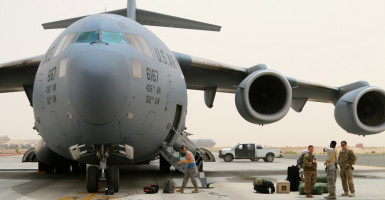U.S. ARMED FORCES, Iraq—The aircraft parked on the ramp at this military base in northern Iraq offer a symbolic counterpoint to the White House narrative that U.S. forces are on the sidelines of the ground war against the Islamic State.
U.S. Army medevac Blackhawk helicopters are based here, including the one that picked up mortally wounded Navy SEAL Charles Keating IV under heavy enemy fire during a May 3 battle north of Mosul.
Also lined up on the tarmac are Army Apache attack helicopters; intelligence, surveillance, and reconnaissance aircraft; and a variety of armed special operations aircraft from different military branches.
“We’re in a war zone, and this place is dangerous,” an Army officer told The Daily Signal.
The U.S. base is an operational hub for Operation Inherent Resolve, the U.S.-led, 66-nation coalition combating Islamic State, the terrorist army also known as ISIS that holds territory in Iraq and Syria.
From the base in the vicinity of Erbil, capital of Iraqi Kurdistan, U.S. and coalition personnel coordinate airstrikes to support Kurdish peshmerga forces. U.S. special operations troops also stage operations from here to advise and assist the peshmerga during combat.
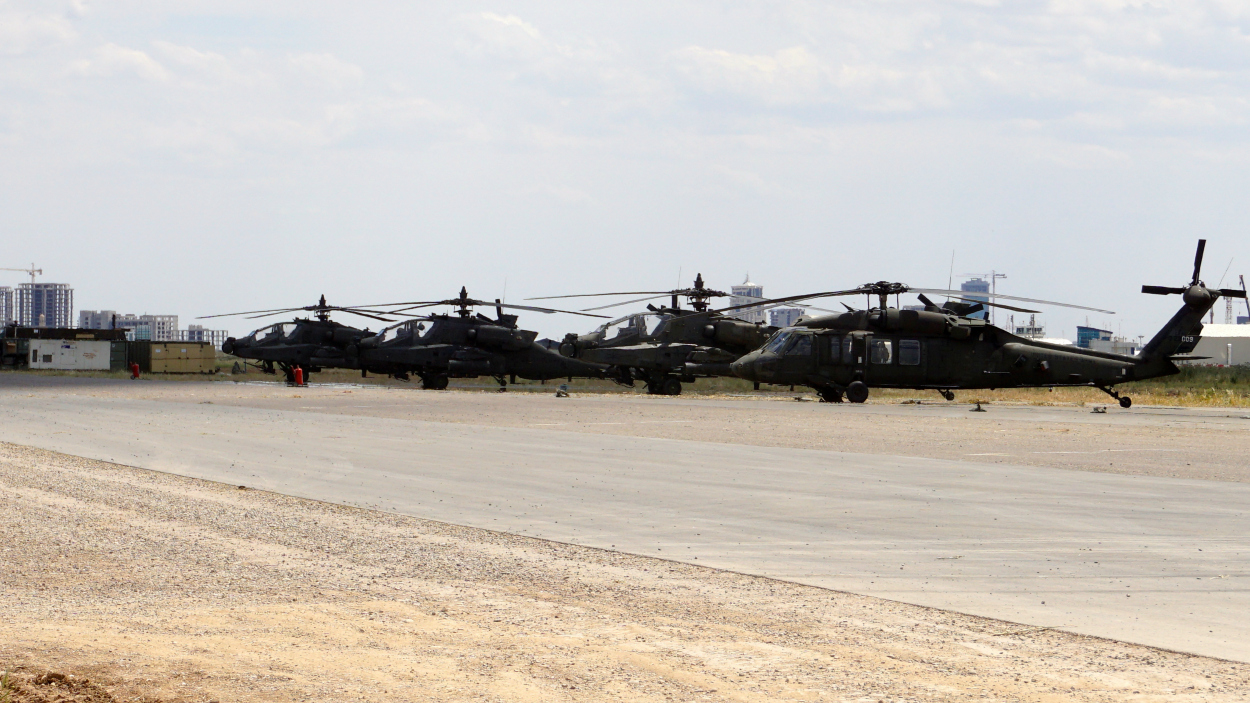
Army helicopters lined up at an airfield at a U.S. base in the vicinity of Erbil, in Iraqi Kurdistan. (Photos: Nolan Peterson/The Daily Signal)
To accomplish the advise-and-assist mission, U.S. special operations troops frequently go into areas where combat is happening.
While embedded with the peshmerga on the ground, U.S. special operations troops sometimes call in airstrikes from coalition warplanes against ISIS forces, a U.S. Army officer told The Daily Signal on condition of anonymity due to security concerns and restrictions on speaking with news reporters.
The White House, however, has insisted U.S. ground forces in Iraq are not in combat.
The day of Keating’s death, White House Press Secretary Josh Earnest told reporters in Washington: “The relatively small number of U.S. service members that are involved in these operations are not in combat but are in a dangerous place.”
The night after Keating was killed, the mood on the base in northern Iraq was somber, yet there was not a feeling of shock or surprise.
For many U.S. military personnel on the ground in Iraq, Keating’s death underscored something they’ve known for a long time—U.S. special operations forces are neck-deep in the daily grind of the ground war against ISIS.
“Most people took it in stride,” the Army officer told The Daily Signal. “We’re in a war zone, and this place is dangerous. We know people are going to get hurt.”
Indispensable
The base in northern Iraq has all the trappings of other U.S. military installations spread across the Middle East, North Africa, and Central Asia.
It has a tent gym loaded with Crossfit equipment and truck tires stacked out back. Civilian contractors in khaki 5.11 Tactical cargo pants and button-down shirts are here. And inside the chow hall, called a DFAC, an eclectic mix of uniforms from coalition countries and military branches is on parade.
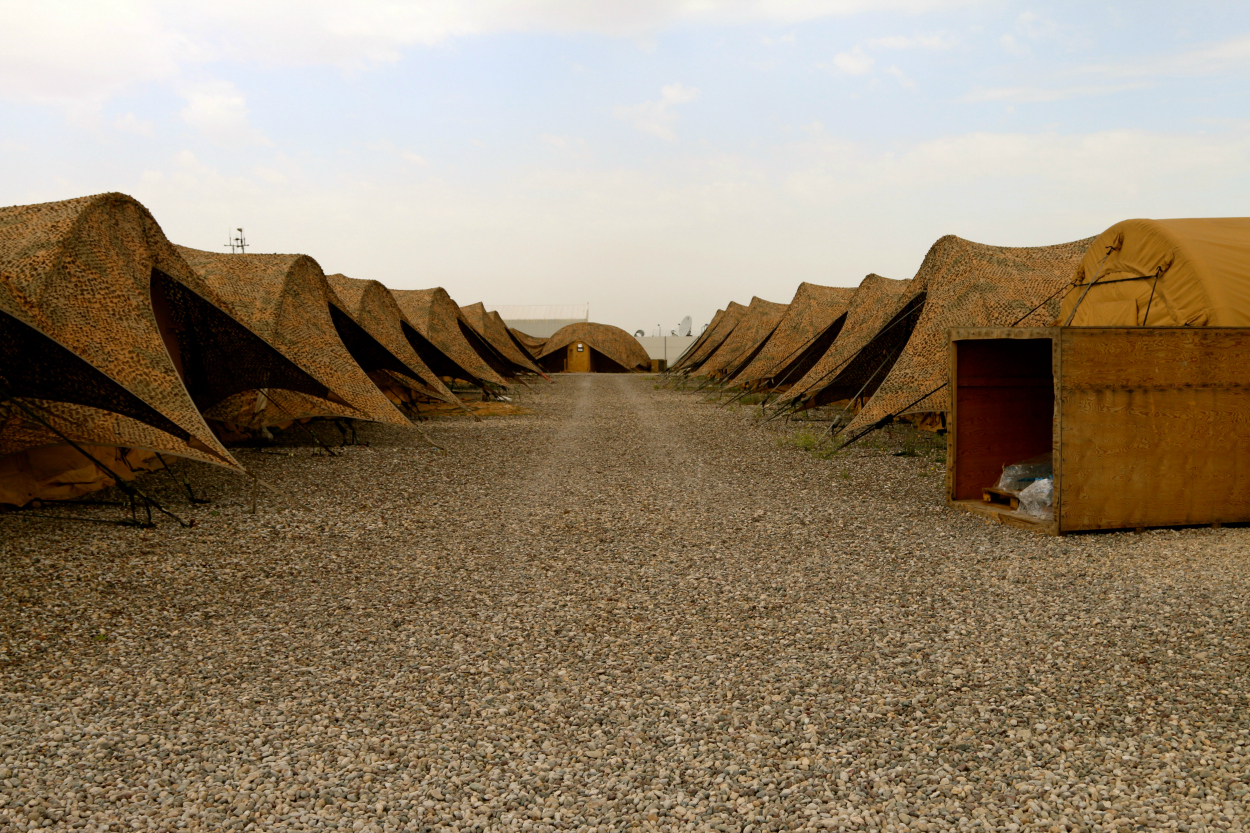
This U.S. base in northern Iraq resembles many other U.S. facilities scattered throughout the Middle East, North Africa, and Central Asia.
There’s also a subgroup of oft-bearded, elite troops who tend to stick to themselves.
The infrastructure at the base has expanded noticeably since this correspondent last visited in September 2015. More troops, tents, aircraft, and equipment are here than eight months ago.
The installation’s growth reflects the creeping growth in the U.S. presence in Iraq, and the increasingly indispensable role U.S. airpower and special operations support play in the ground war against ISIS.
“We can’t fight without U.S. airstrikes or U.S. support,” a Kurdish official at the Kurdistan Region Security Council told The Daily Signal on condition of anonymity due to security rules. “But the U.S. mission can’t exist without us. It’s a partnership.”
A Dangerous Place
U.S. special operations forces in Iraq for the advise-and-assist mission are not sequestered inside fortified compounds impervious to attack.
These members of the military, including Navy SEALs and Army Special Forces, deploy to team safe houses behind the front lines to carry out their mission and to forward stage as land-based, quick-reaction forces in case U.S. servicemen and servicewomen come under attack.
The Navy SEAL quick-reaction force in which Keating served was stationed at one such team house outside Mosul.
The SEALs deployed in “nontactical vehicles,” military jargon for civilian SUVs. The ensuing firefight lasted for hours, according to military personnel and news reports.
The U.S. Army DUSTOFF Blackhawk helicopter that picked up Keating came under heavy fire and returned pockmarked with bullet holes.
Keating was the third U.S. service member to die in Iraq from enemy fire since Operation Inherent Resolve began in 2014. And the May 3 battle wasn’t the first time U.S. aircraft took fire from ISIS over Iraq.
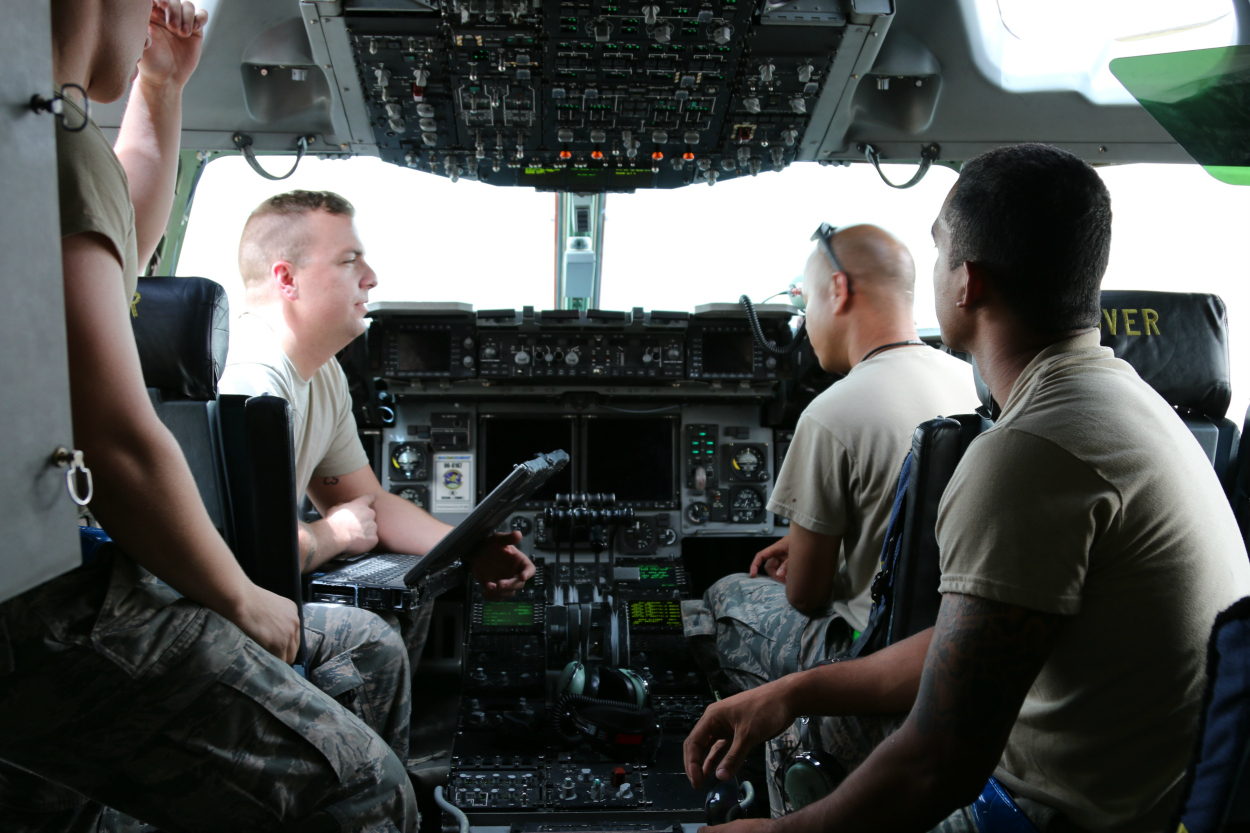
Air Force personnel perform ground checks in the cockpit of a C-17 cargo plane at an undisclosed location in the Persian Gulf.
In September 2015, Air Force pararescuemen, also known as PJs, and combat rescue officers from the 57th Rescue Squadron, then deployed to this location, told The Daily Signal that ISIS forces frequently fired on the HH-60G Pave Hawk helicopters they used to forward position behind enemy lines.
“We take fire every time we go out,” a combat rescue officer said then.
Also in September, U.S. Air Force A-10 attack pilots flying missions over Iraq and Syria from a base in the Persian Gulf region said the volume of surface-to-air fire they faced was much higher than in Afghanistan.
“There’s a real threat here, unlike in Afghanistan,” an A-10 pilot told The Daily Signal at the time. “I’ve had a few close calls. Do we respect the threat? Yes. Are we afraid of it? No.”
Center of Gravity
The Department of Defense said it officially maintains 4,087 troops or less in Iraq and has plans to increase the number of special operations troops and support personnel in Syria from 50 to 300.
The number of U.S. troops on the ground in Iraq and Syria does not, however, reflect the aggregate U.S. war effort against ISIS.
To support Operation Inherent Resolve and military operations in North Africa, as well as operations in Afghanistan, the U.S. is standing up new bases and refurbishing old ones across the Middle East, reflecting a reversal of White House plans to draw down U.S. forces in the region.
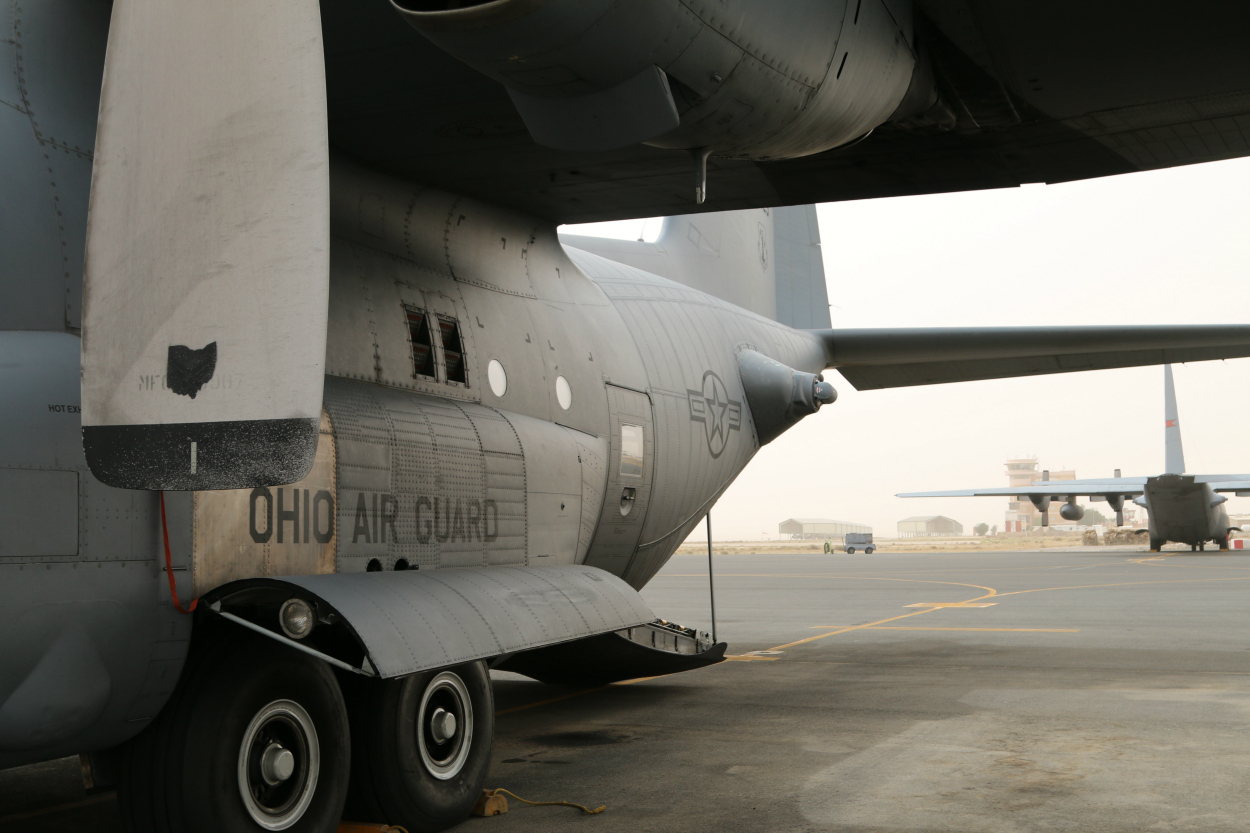
U.S. military bases throughout the Middle East support Operation Inherent Resolve, the coalition fighting ISIS in Iraq and Syria.
“It’s busier now than it was a year ago,” Air Force Lt. Col. Mike Cummings, a C-130 pilot from the Alaska National Guard, told The Daily Signal during an interview at an undisclosed location in the Persian Gulf region.
“We were drawing down and now we’re building back up,” Cummings said. “Now we’re moving in the opposite direction.”
As of the end of April, the U.S. had conducted 9,073 airstrikes in Iraq and Syria in support of Operation Inherent Resolve, according to the Pentagon. Nearly all the U.S. military aircraft, manned and unmanned, launched from bases and Navy vessels outside Iraq and Syria.
U.S. Central Command, or CENTCOM, declined to disclose the number of bases U.S. forces use throughout the Middle East to support the operation.
CENTCOM also declined to disclose the total number of U.S. military personnel committed to Operation Inherent Resolve due to “host-nation sensitivities and operational security.”
According to news reports and open source data, about 50,000 U.S. military personnel are deployed throughout the Middle East, including locations in Turkey and Navy personnel at sea. And, according to CENTCOM, 9,800 personnel remain in Afghanistan.
In an emailed statement to The Daily Signal, a CENTCOM spokesperson said: “We maintain the necessary forces and capability throughout the region to assist our partners and respond to threats as appropriate.”
Chasing the Front Lines
The total number of U.S. troops throughout the Middle East region is only a fraction of the approximately 170,000 U.S. troops who were in Iraq alone during the “surge” in 2007.
And unlike the days of Operation Iraqi Freedom and Operation New Dawn, no countrywide network of U.S. forward operating bases and combat outposts inside Iraq exists from which ground and air forces can project power.
The war against ISIS in Iraq is a frontal war, with a clear delineation between enemy and friendly territory. The 1,200-mile-long front line in Iraq is defined in places by trenches and hilltop forts. Opposing camps trade potshots across no man’s land.
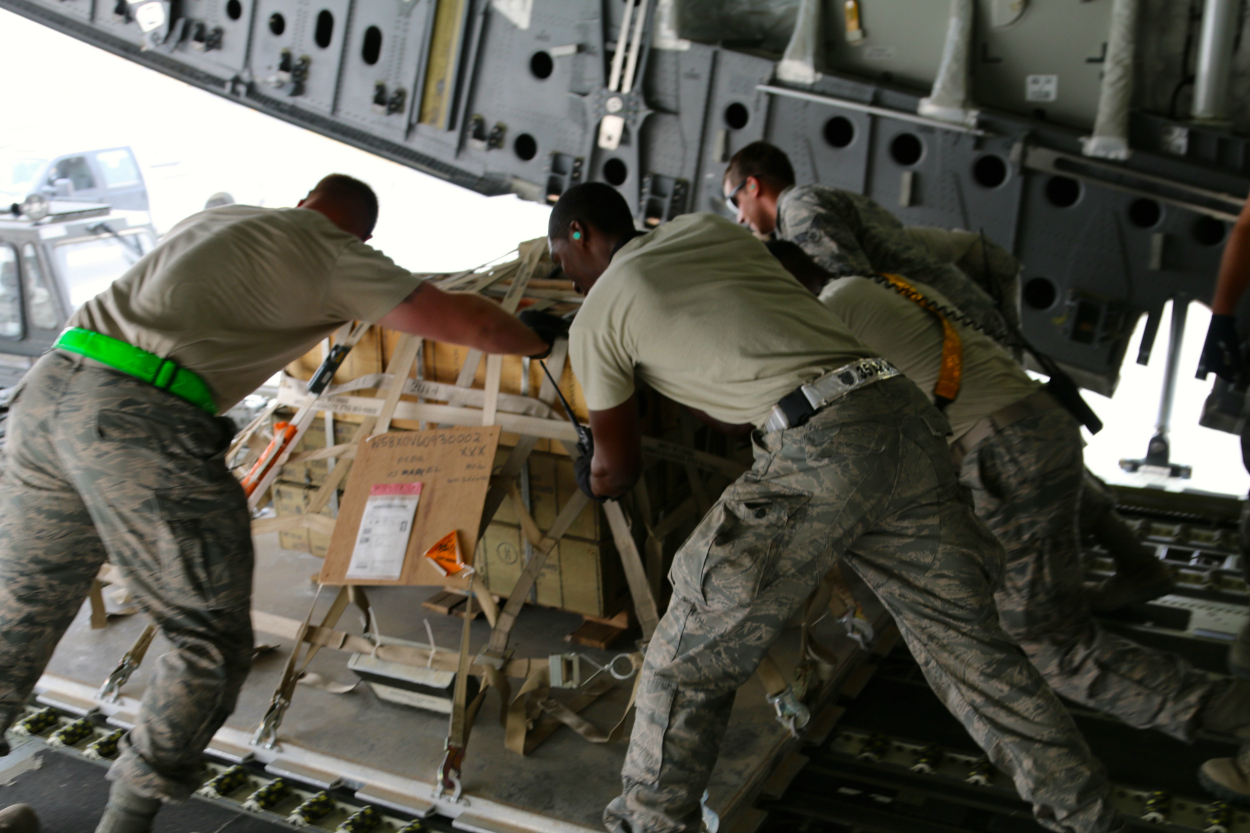
Air Force personnel unload a C-17 cargo plane at an undisclosed location in the Persian Gulf region.
As Iraqi and Kurdish forces take back ground from ISIS, coalition air assets and advise-and-assist personnel constantly move to new bases closer to the shifting front lines. Some bases that were strategically positioned to launch warplanes a year ago are now inconveniently distant from the battlefield’s northward shifting center of gravity.
Bases in Turkey, consequently, play a more important role due to their geographical proximity to the battle space.
The Turkish air base at Incirlik, for example, was reopened to U.S. Air Force F-16s in August 2015 to conduct airstrikes against ISIS targets. The F-16s were swapped out for A-10 attack planes in October. And, according to news reports, F-15C fighter jets and F-15E strike aircraft also have deployed to Incirlik since August.
The total U.S. military force deployed at Incirlik has grown to nearly 2,500, up from about 1,300 last year, according to news reports.
Long-Term Plans
The Daily Signal recently visited an Air Force base at an undisclosed location in the Persian Gulf region. Military officials at the base said about 1,800 U.S. troops and about 2,200 civilian support personnel are deployed there.
The base is a key airlift hub for Operation Inherent Resolve and for supporting military operations in the Horn of Africa. The location is also the launching pad for U.S. and British drones flying missions over Iraq and Syria. Other coalition partner countries fly intelligence, surveillance, and reconnaissance missions from here.
Air Force Col. Clarence Lukes Jr., commander of the 386th Air Expeditionary Wing headquartered at the base, said Pentagon planners drew up a three- to five-year plan to build up its infrastructure after Operation Inherent Resolve kicked off in 2014. And, Lukes added, the Pentagon plans to use the base “for much longer.”
“This puts us in a perfect crossroads for different types of mission sets … regardless of the adversary,” Lukes said.

A U.S. base in northern Iraq has grown in the last eight months, underscoring an increasing U.S. role in the war against ISIS.
The base has a swimming pool, a movie theater, and a state of the art gym. Plans are under way to build brick and mortar dormitories to replace the tents and trailers in which most personnel now live.
A recreation center, called the Drop Zone, includes ping-pong tables, flat screen TVs tuned to the Armed Forces Network, and cans of nonalcoholic Beck’s beer in the fridge.
A coffee shop, the Green Bean, offers free Wi-Fi, mocha lattes, and protein shakes. Wi-Fi is available throughout the base. Self-serve ice cream and Krispy Kreme doughnuts can be found in the DFAC.
“Morale hinges on three things,” Lukes said. “Self-serve ice cream, laundry, and Wi-Fi.”
U.S. servicemen and servicewomen say there has been a noticeable uptick in operational tempo since Operation Inherent Resolve began almost two years ago. Yet, many also consider the battle against ISIS to be just the latest chapter in nearly 15 years of nonstop combat operations.
For them, combat deployments are now a way of life.
“It’s just the status quo,” Lt. Col. Corey Reed, deputy operations group commander for the 386th Air Expeditionary Wing, said. “As Afghanistan tapered off, OIR [Operation Inherent Resolve] kicked off. So it’s business as usual.”
“It’s like the last one never ended,” Cummings, the C-130 pilot, said. “It’s not really the start of something new.”





























